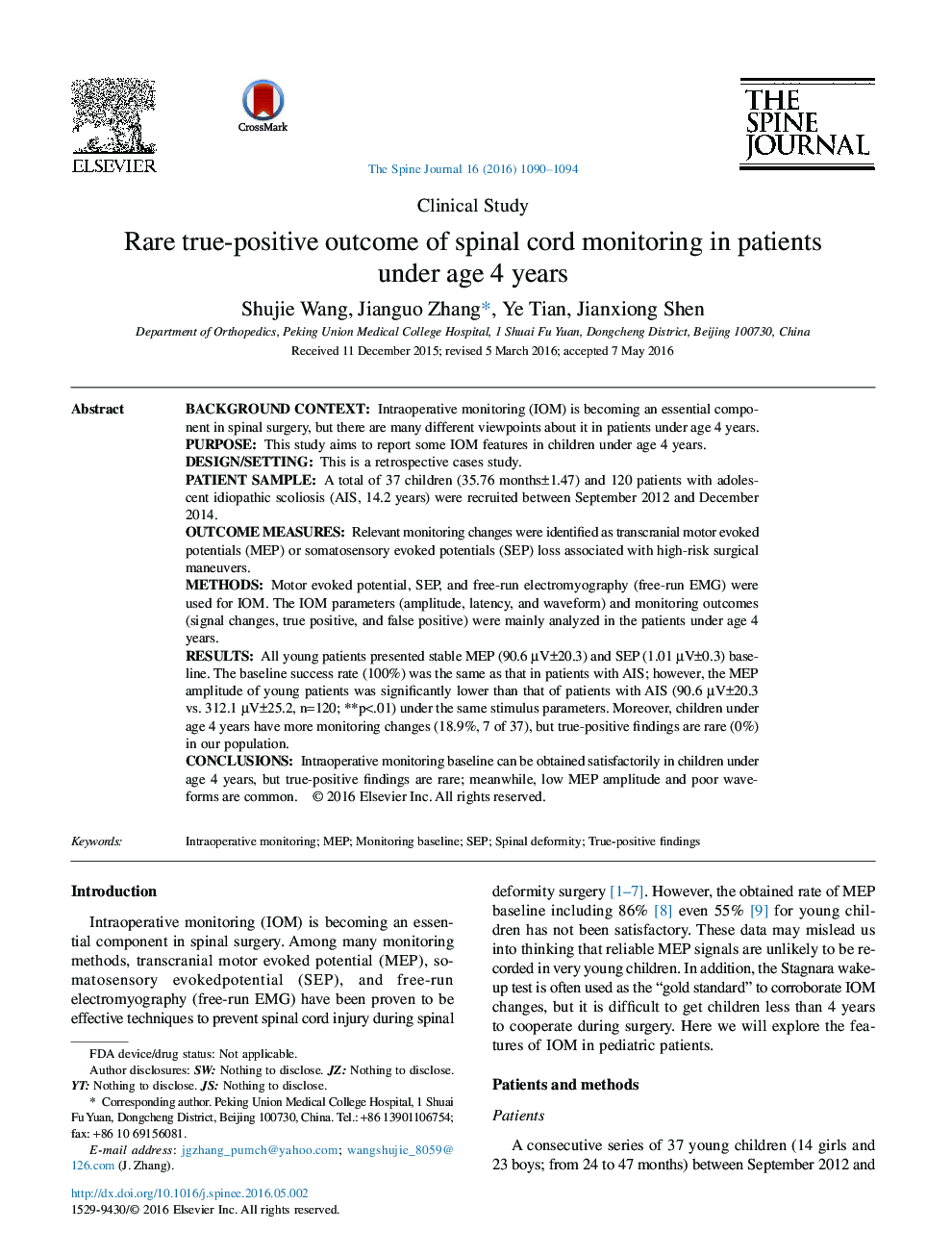| Article ID | Journal | Published Year | Pages | File Type |
|---|---|---|---|---|
| 4095728 | The Spine Journal | 2016 | 5 Pages |
Background ContextIntraoperative monitoring (IOM) is becoming an essential component in spinal surgery, but there are many different viewpoints about it in patients under age 4 years.PurposeThis study aims to report some IOM features in children under age 4 years.Design/SettingThis is a retrospective cases study.Patient SampleA total of 37 children (35.76 months±1.47) and 120 patients with adolescent idiopathic scoliosis (AIS, 14.2 years) were recruited between September 2012 and December 2014.Outcome MeasuresRelevant monitoring changes were identified as transcranial motor evoked potentials (MEP) or somatosensory evoked potentials (SEP) loss associated with high-risk surgical maneuvers.MethodsMotor evoked potential, SEP, and free-run electromyography (free-run EMG) were used for IOM. The IOM parameters (amplitude, latency, and waveform) and monitoring outcomes (signal changes, true positive, and false positive) were mainly analyzed in the patients under age 4 years.ResultsAll young patients presented stable MEP (90.6 µV±20.3) and SEP (1.01 µV±0.3) baseline. The baseline success rate (100%) was the same as that in patients with AIS; however, the MEP amplitude of young patients was significantly lower than that of patients with AIS (90.6 µV±20.3 vs. 312.1 µV±25.2, n=120; **p<.01) under the same stimulus parameters. Moreover, children under age 4 years have more monitoring changes (18.9%, 7 of 37), but true-positive findings are rare (0%) in our population.ConclusionsIntraoperative monitoring baseline can be obtained satisfactorily in children under age 4 years, but true-positive findings are rare; meanwhile, low MEP amplitude and poor waveforms are common.
